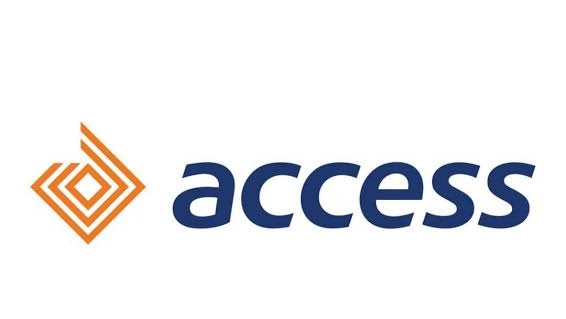- Search for topics or project materials by department. 2015/2016 Research Work 46 ARCHITECTURE 12 Accounting 158 Agriculture & Farming 21 Arts and Crafts 25 BIOCHEMISTRY 30 Bank & Finance 45 Biology 1 Business Administration 162 CHEMICAL ENGINEERING 18 Career People 18 Computer Science 0 Computer Science 244 Computer Science E-books 0 ECONOMICS 117 EDUCATION 78 ELECTRICAL ELECTRONICS 88 ENGLISH 14 ESTATE MANAGEMENT 16 Electrical Electronics 0 Food 19 Forum 0 General Topics 4 HOSPITALITY & TOURISM 123 Import & Export 10 Land Survey & Geoinformatics 68 Law 7 MARKETING 37 Marketing & Advertising 11 Mass communication 155 Masters and Doctorate 118 Mechanical Engineering books 0 Media & Publishing 6 Medical Science E-books 0 Micro Biology 4 Micro Biology 8 OTHERS 0 Oil & Gas 11 Online & Internet 36 POLITICAL SCIENCE 0 Program / Source Code 0 Programming E-books 0 Public Administration 25 Real Estate 20 Religious E-boooks 0 Retail 20 STATISTICS 17 Science Laboratory 0 Science laboratory 56 Sermons & Prophecies Ebook 0 Services 19 Small Scale Manufacturing 21 System Applications 0 Technology 30
SUPERVISION AND EFFECTIVE TRANSPORTATION ADMINISTRATION
SUPERVISION AND EFFECTIVE TRANSPORTATION ADMINISTRATION
TABLE OF CONTENT
Title page
Certification page
Dedication
Acknowledgement
Table of contents
List of table
Abstract
CHAPTER ONE: Introduction
1.Background of the study
1.2Statement of the problem
1.3Objectives/purpose of the study
1.4Research question/hypothesis
1.5Significant of the study
1.6Scope of the study
1.7Limitation of the study
1.8Definition of special terms
References
CHAPTER TWO: Review of the Related Literature
2.1Theoretical framework
2.2Historical background
2.3Current literature on theories postulated above
References
CHAPTER THREE: Research Design and Methodology
3.1Research design
3.2Sources of data
3.2.1Primary source of data
3.2.2Secondary source of data
3.3The population of the study
3.4Determination of sample size
3.5Methods of data collection
3.5.1Questionnaire design, distribution andcollection of responses
3.6Methods of data presentation and analysis
CHAPTER FOUR: Data Presentation and Analysis
Data presentation
Demographic characteristics
CHAPTER FIVE: Summary of Findings, Recommendation Conclusion
5.1Summary of findings
5.3Conclusion
5.2Recommendation
Bibliography
Appendixes
CHAPTER ONE
INTRODUCTION
1.1 BACKGROUND OF THE STUDY
Road Transportation is a necessary end right from early history. The mobility of people and materials especially in the present days become one of the greatest needs that have to be adequately satisfied on our society and economy at large.
Transportation is referred to as the engine of the economy Kunri 2005:79. This means that with out transportation management system, the entire economy will suffer stagnation. Transportation helps to bridge the gap between producers, suppliers and industrials users as well as individual commuters.
Research has shown that transportation alone account for about 46 of the total physical distribution costs for manufacturing companies and 28 for reseller companies
It is important to note that not much success can be accomplish in manufacturing, distribution of goods and services including the movement of people without transportation.
It is as a result of the great importance attached to transportation that man has over the years developed various transportation modes in other to facilitate the movement of people and materials. The mode of transportation selected will greatly depend on price, time, delivery, condition and destination, customers patronage, and past purchase satisfaction.
This poor transportation management can therefore jeopardize the source of procurement of materials; goods and services, movement or people and even course increase in prices and loss of lives.
1.2 STATEMENT OF THE PROBLEM
Poor road transportation management is one major problem that is affecting the growth of the economy. Poor road transportation management has led to the ineffectiveness and collapse of the Nigerian road system that suppose to carry bulky goods from one city to another and has made inflation to be high. This in turn has bounced as the road transportation system characteristized by heavy duty lorries overworking the road system and the resultant effect is damages of roads causing accidents and loss of lives and property.
View Related Projects
THE_IMPACT_OF_MANAGEMENT_INCENTIVE_POLICIES_ON_WORKER’S_PRODUCTIVITY
OFMANAGEMENTINCENTIVEPOLICIESONWORKERSPRODUCTIVITYThis project work comprises of chapter one to five with refe...
Continue readingAN EXAMINATION OF THE IMPACT OF MICRO CREDIT PROGRAMMES ON ENTREPRENEURSHIP DEVELOPMENT Â Â IN AKWA IBOM AND CROSS RIVER STATES.
INTRODUCTIONBACKGROUND TO THE STUDYPrior to the 1970s, the view that large firms were the cornerstone of a modern ...
Continue readingTHE_IMPACT_OF_MANAGEMENT_INCENTIVE_POLICIES_ON_WORKER’S_PRODUCTIVITY
OFMANAGEMENTINCENTIVEPOLICIESONWORKERSPRODUCTIVITYThis project work comprises of chapter one to five with refe...
Continue reading

